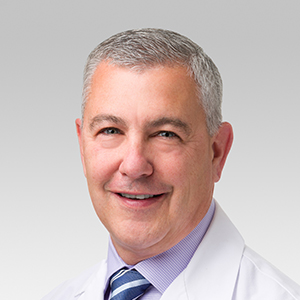What Parents Need to Know About SIDS
Published September 2019
It’s Rare, and You Can Reduce Risk
Sudden infant death syndrome (SIDS) is the unexplained death of a seemingly healthy baby, typically during sleep, in the first year of life. The peak for SIDS risk is between one and four months of age. More than 90% of SIDS incidences occur before six months of age.
“SIDS is rare and devastating, but encouraging parents to put their children to sleep on their backs drastically helped reduce unexplained infant deaths,” says Northwestern Medicine Pediatrician Michael D. Bauer, MD. “This is the number one thing that parents can do to reduce their child’s risk of SIDS.”
In fact, the American Academy of Pediatrics (AAP) “Back to Sleep” campaign, launched in 1994, reduced the rate of SIDS by 60%. In 2022, about 1,529 deaths were attributed to SIDS. There are around 3,596,017 births in the U.S. annually.
SIDS Risk Factors You Can’t Control
Brain abnormalities. “There is some genetic underlying vulnerability that can cause subtle brain abnormalities during infancy, a critical time for brain development,” says Dr. Bauer. “These make some infants more susceptible to external triggers for SIDS.” Some brain defects linked to SIDS occur in hippocampus, the portion of the brain that controls vital functions like breathing, heart rate and body temperature. There is currently no way to test your infant for abnormalities in the hippocampus.
Low birth weight. Lower birth weight generally means a less developed brain, which can increase risk for SIDS.
Family history. There’s an increased risk if the baby has a sibling or cousin who died from SIDS.
Sex. Males are at a higher risk for SIDS than females.
Race. American Indians, Alaskan Natives and African Americans have a much higher incidence of SIDS.
Age of the mother. Moms under 20 years old have a high risk of having an infant with SIDS.
Reduce Your Baby’s Risk of SIDS
“Back to Sleep.” “The most important thing you can do to reduce your child’s risk of SIDS is putting them to sleep on their back,” says Dr. Bauer. “Babies have great built-in protective mechanisms and can generally regulate their breathing and spit up on their own while sleeping on their backs.”
Remove all items from your child’s crib. “It seems stark and unwelcoming, but you really don’t want anything in your child’s bed,” says Dr. Bauer. “Anything soft and moveable poses a risk for SIDS.” That includes crib bumpers.
You really don’t want anything in your child’s bed.— Michael D. Bauer, MD
Put your child to sleep on a firm surface, preferably a mattress in a crib approved by the AAP. The latest evidence from the AAP shows that sleeping on a soft surface like a cushy mattress, couch or adult bed increases an infant’s risk of SIDS. Do not put your child to sleep in a car seat, recliner or other device that they may use during the day.
Sleep in the same room, not bed. The AAP recommends your child sleep in a crib in your room preferably until they turn one, but for at least six months. The first six months are the most important time. Do not sleep in the same bed as your child; this poses a risk of suffocation from pillows and blankets, and a risk of rolling over your child during sleep.
Put your child to sleep in a cool environment. The ideal temperature is 65 to 70 degrees F. “Cooler is better and remember, no blankets,” says Dr. Bauer. “There are plenty of AAP-approved sleep sacks to keep your baby at a comfortable temperature.”
Stop swaddling when they can roll. If you choose to swaddle your child to calm them or if they’re colicky, you’ll need to stop before they reach three or four months of age, when they can start rolling over.
Breastfeed your child if you’re able. “Breastfeeding has been shown to reduce SIDS,” says Dr. Bauer.
Use a pacifier. For bedtime and naps. “Studies have shown that pacifiers can reduce risk of SIDS,” adds Dr. Bauer. “Do not use pacifiers with anything attached to them, like strings or clips.”
Get regular prenatal care early on in your pregnancy.
Don’t expose your baby to tobacco smoke.
Avoid smoking, alcohol and drug use during pregnancy.
Using a SIDS Monitor
SIDS monitors are small, moveable items that go in your child’s crib, so Dr. Bauer does not recommend using one. “There isn’t any data that shows these devices are safe or reduce the risk of SIDS,” he adds. “They also cause unnecessary stress among parents.”
“Control what you can control,” says Dr. Bauer. “These simple things you can do for your baby’s environment can really help reduce the risk of SIDS.”






